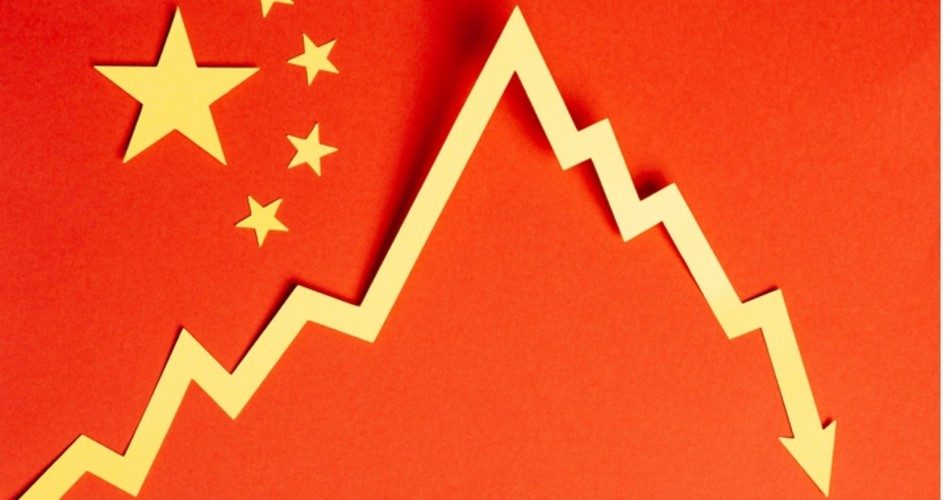
The combination of Keynesian economic policies and the increasing strictures of China’s command economy is making for a bleak outlook for China for 2020 and beyond.
The idea that government spending drives economic growth is one of the myths that drive all central banks’ maneuvering. If some government borrowing and spending is good, then more is better — until it isn’t. While government spending has been a significant driver of China’s remarkable change from a third world poverty stricken economy to the world’s second largest economy, government debt is now a lead weight, pulling down the country’s economy.
That government spending has now created a debt-to-GDP ratio among the highest in the world: 300 percent. In other words governments in China — national, regional and local — owe more than three times the total economic output of the country.
As President Xi Jinping has attempted to rein in government borrowing, off-book borrowings (called “off balance sheet” loans) have soared. They now comprise a third of all borrowings, but because the credit-worthiness of the borrowers is questionable, any decline in the economy could push up default rates. In fact, it’s already happening.
But even worse, the Chinese consumer has been hit with rising food prices, making it increasingly difficult for the average family (which spends nearly twice as much of its income on food as does the average American household) to make ends meet. Thus consumer demand for other items is slowing.
This puts pressure on China to boost its exports in order to obtain the currency it needs to service its ever-mounting debt. But the latest data (that’s reliable) shows exports are slowing. As the Wall Street Journal noted, “Chinese consumer inflation is rising at its fastest rate in nearly a decade [while] economic growth … is at its lowest level in three decades.” The Journal added: “[That] rising inflation has already dented China’s consumer and business confidence [and] could slow economic growth [further].”
Reliable numbers on China’s economy are notoriously hard to come by. But the China Beige Book (CBB) has made it its business to ferret out numbers that are reliable, and they aren’t pretty. On Friday it reported that business cash flows are rapidly deteriorating (as measured by the increasing number of late payments on invoices), while new orders are falling. Based on interviews with more than 3,300 Chinese businesses, CBB noted that fourth-quarter delays in “payables and deliverables soared to the worst levels we’ve recorded.”
The CBB noted further that the Chinese economy saw record levels of corporate borrowing in the fourth quarter: “Loan applications nationally shot to an all-time high, while rejections sank to an all-time low.”
Another concern is the aftereffects of the country’s draconian “one-child” policy. As The Diplomat noted, that “policy served as an accelerator and contributed to the country’s spectacular growth over the past four decades.” But its ending in 2015 won’t help the economy for at least a decade while the cohort of those who survived that policy is aging.
The problem facing China is that the population is aging more rapidly than its ability to provide the necessary health and retirement services. As Standard Chartered economists explained: “Getting old before getting rich is one of the biggest … structural challenges in … Asia. The main reason why middle-income countries are concerned about this is that it might inhibit their ability to join the group of high-income developed countries.”
Andy Seaman, chief investment officer at Stratton Street Capital, noted the dangers facing China of increasing debt levels with a shrinking tax base:
Debt is a major risk for countries [like China] with aging populations, particularly once working-age populations start to decline, as the debt burden will need to be financed by a smaller number of people.
As a result unhappiness in the private sector is a key concern for those running China’s economy who remain in power only through threats, intimidation, and guns. Underreported at the time of the Tiananmen Square massacre in 1989 was this: According to The Tiananmen Papers, a collection of leaked government documents, there were protests in 341 Chinese cities between April and June 1989. Between June 5 and June 8, as news of the violence in Beijing spread, the government received reports of demonstrations in 181 cities, including all provincial capitals, major cities, and economic zones.
There are other challenges facing the communists trying to bring the country they conquered in 1949 out of the dark ages but one thing is certain: China isn’t likely to be able to grow its economy fast enough to meet them.
An Ivy League graduate and former investment advisor, Bob is a regular contributor to The New American primarily on economics and politics. He can be reached at [email protected].
Illustration: LemonTreeImages/iStock/Getty Images Plus
Related article:
Will China’s Slowing Economy Force a Trade Deal With the U.S.?



